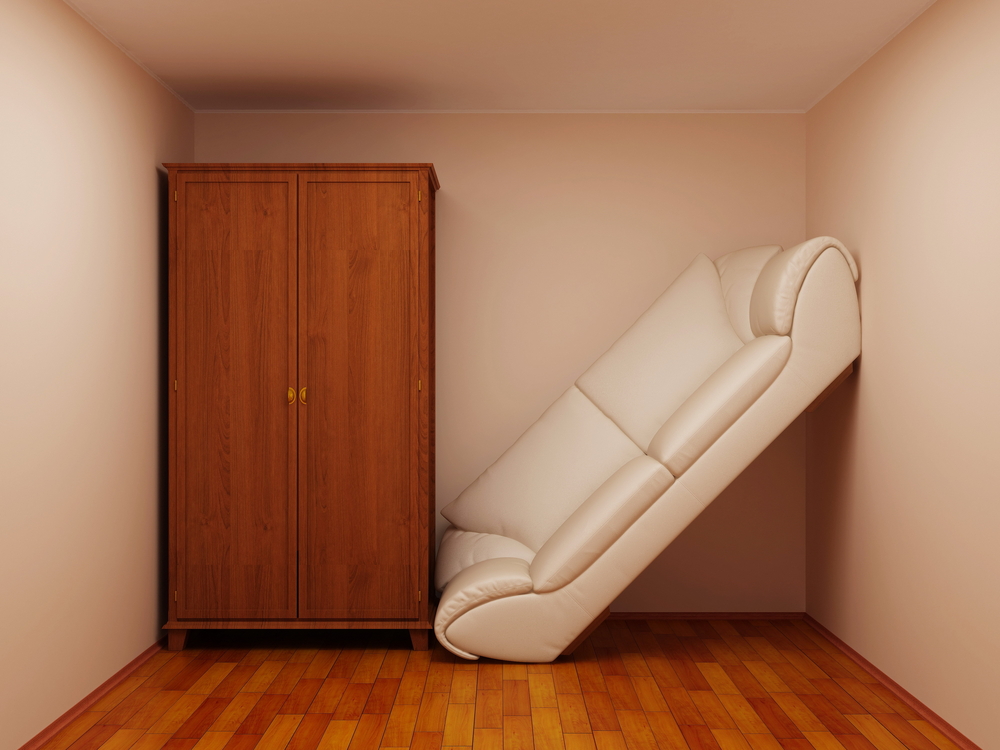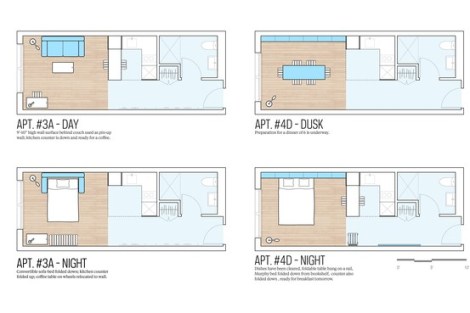Are you sick of micro apartments yet? Well, too bad. Yesterday New York City Mayor Michael Bloomberg announced the winner of a competition to design teensy live-in closets for an East Side apartment complex of 55 units. Here are drawings of the winning design, showing how an apartment might be adapted throughout the day:
To make up for the shoe-box dimensions, the building will offer residents common spaces like a rooftop garden and lounge area on nearly every floor. The aim is to offer more such tiny apartments throughout the city as affordable options for the young singles, cash-poor and empty nesters who are increasingly edged out of the nation’s most expensive real-estate market…
If the pilot program is successful, New York could ultimately overturn a requirement established in 1987 that all new apartments be at least 400 square feet.
A third of Manhattan residents live alone, and apparently hate the idea of communal housing, so Bloomberg says the city needs these units to “keep us strong in the 21st Century” with “new ideas” and the young gentry that hatch them. Young gentry like Manhattan resident Sam Neuman, who loves his tiny apartment, but not in a super-healthy way:
“I’ve developed this weird Stockholm Syndrome, which you identify with your captors,” said the 31-year-old publicist. “When I go to other people’s apartments, I think, ‘Why do they need more than one bedroom?’ I’m really very happy here. There’s not really time to let things accumulate because … where would I put them?”
Neuman’s point is legit: Doing more with less is great. More people want to live alone than ever before, and tiny house porn is the cutest of all the house porns. But these micro units are not an affordable housing strategy, though they’re often pitched as exactly that. In many cities, they’re exempt from rent-control measures.
The Wall Street Journal reports that 40 percent of the apartments in the city’s first micro-unit building will rent out at under market rate, but most will cost as much as a standard and much larger studio, further driving up the per-square-foot price of housing in one of the country’s most expensive cities.
Micro apartments address density, but not diversity or affordability. If we want our cities to grow, we need to make room for families and others who are not content or able to squeeze into homes the size of a parking space.




